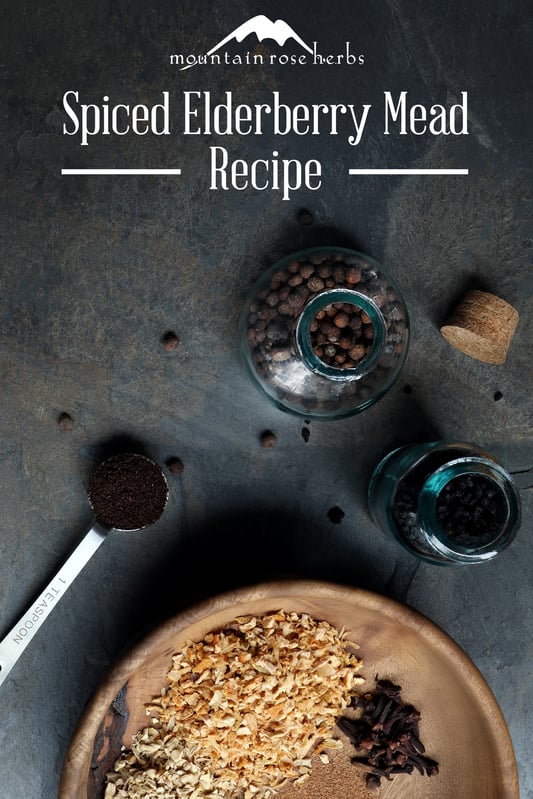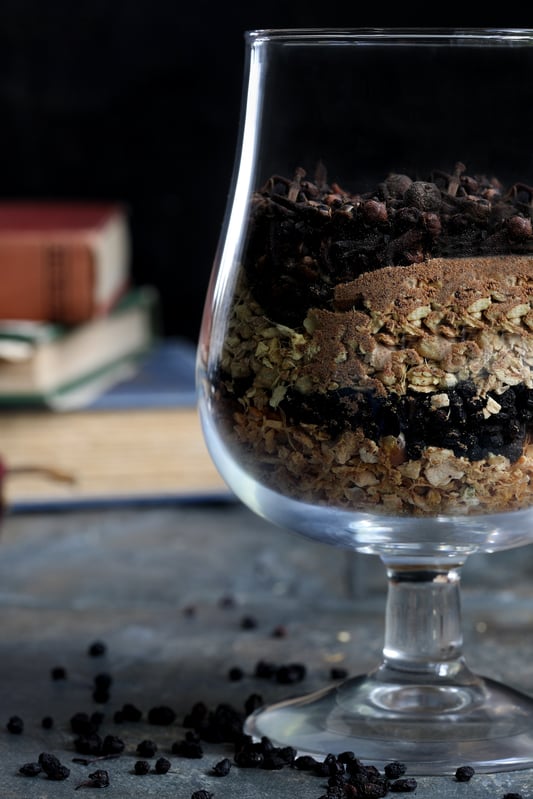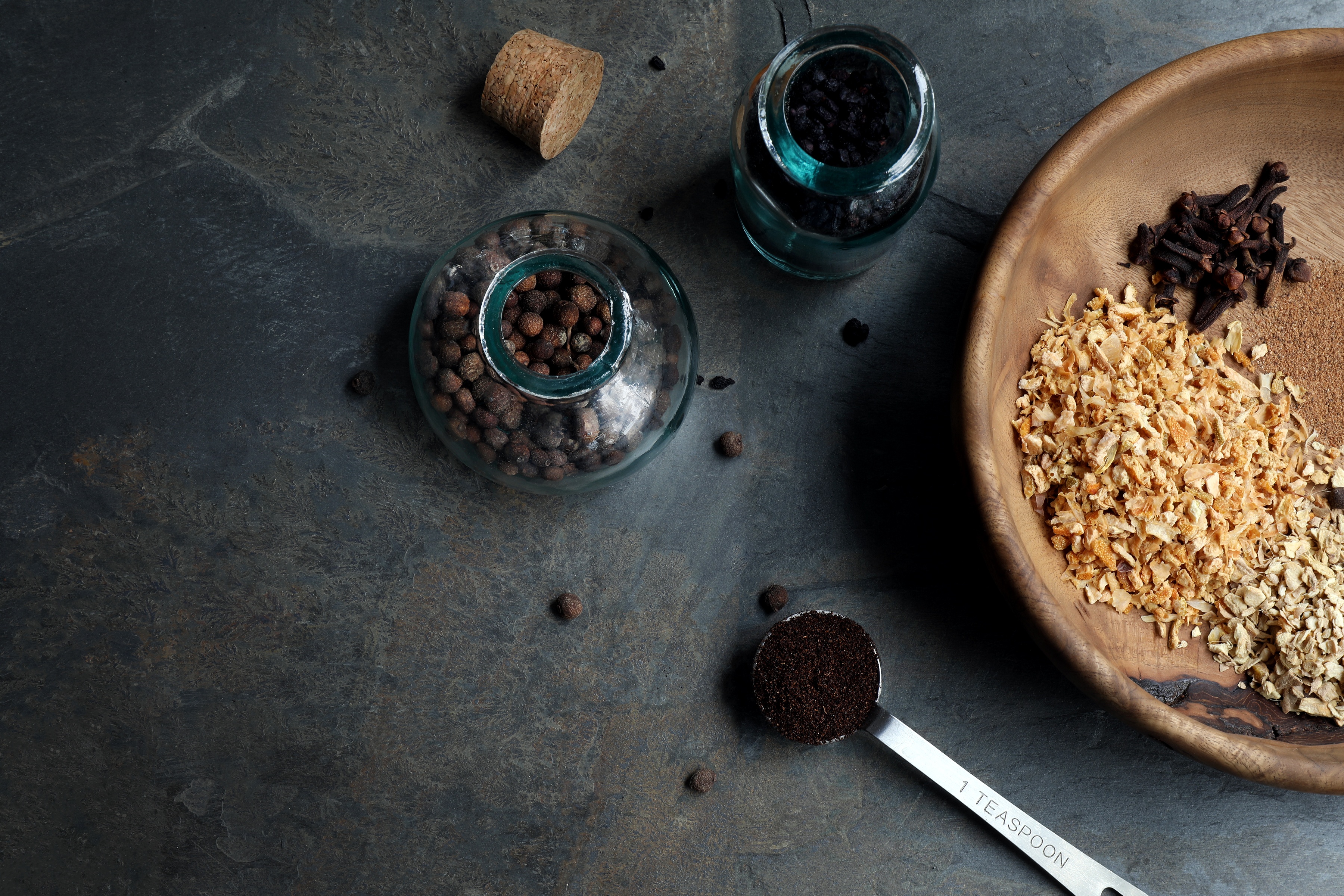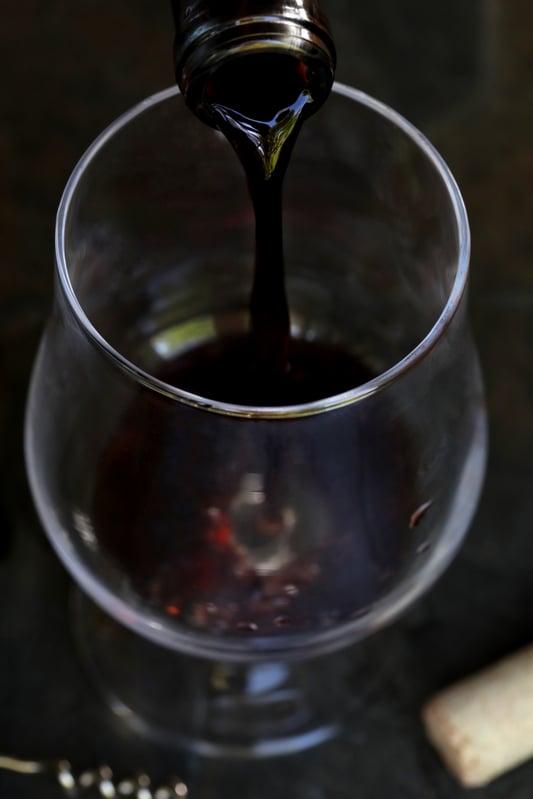It is believed that the honor of "oldest alcoholic beverage on the planet" goes to mead. Evidence of this enchanting gold elixir has been found in Chinese pottery vessels dating back to 7000 BCE. While the discovery of mead was almost certainly a happy accident, over the ages this “nectar of the gods” has found a home in many tales, myths, legends, customs, ceremonies, and traditional remedies. Today, mead is enjoyed around the world in a variety of styles and strengths, from session meads to full-strength sack meads.
Mead Terminology: True Meads, Metheglins, Melomels, & "Methomels"
Mead brewed with herbs and spices added is called a metheglin, a term derived from the Welsh word meddyglyn, a compound of "meddyg" (healing) and "llyn" (liquor). When you add fruit to a mead, it is called at melomel. Since we’ll be brewing mead with dried berries and spices, we’ll create a hybrid style often referred to as a "methomel."
This mead can be made with a variety of dried berries, my favorites being maqui and elder berries is a delicious departure from the golden brew that most people picture as mead. It is a stunning deep purple, subtly spiced, and has a fruity bang that lingers on the palate. It will invite you to drink deeply, but do take care: this beguiling beverage is as strong as a glass of wine!
The base flavor of this methomel is set by the maqui or elder berries and botanicals, but there are a few subtle ways to tailor the brew to your preferences. The first is yeast choice. After talking it through with a friend, I chose to use a chardonnay yeast, Lalvin Qa23, because I wanted a character akin to a fresh, fruity white wine. I thought about using a rich red wine yeast like Lalvin RC-212, which would have emphasized the spice and full body of the mead, or using a champagne yeast like Lalvin EC-1118, which would have dried out the mead without imparting a distinctive yeast character. Whatever strain you choose to use, just be sure the yeast can tolerate up to 14 percent alcohol.
The other way to customize the profile of this mead is with your honey choice. Different varieties of honey impart different flavors and aromas. While the honey character is subdued by the addition of fruit and spices, it is still an important consideration. Lighter honey, like orange blossom or clover, will easily be overwhelmed by the berries and spices and will create a more delicate mead. Darker honey, like raspberry or pumpkin, with stronger flavors, will impart more of their character to this recipe. I chose to use a dark wildflower honey for this batch, as I wanted the honey character to shine rather than play a supportive note.
Like my Deep Roots Gruit herbal beer recipe, these directions only cover the first few steps of mead brewing: creating the "must". If you aren’t familiar with homebrewing, I recommend consulting some preparatory resources before you get started. The American Homebrewers Association has a How to Brew Mead guide with photos that walk you through the entire process. Even though mead requires less specialized equipment than brewing , the same sanitization and cleaning procedures are vitally important.
Spiced Berry Mead Recipe
Yields 2 gal.
Original Gravity: 1.119 (28 Brix)
Ingredients
- 2 gal. filtered or distilled water
- 1 lb. organic dried maqui berries or organic dried elder berries
- 1/4 cup organic dried sweet orange peel
- 4 organic sweet cinnamon sticks
- 1 organic vanilla bean, split
- 1 Tbsp. organic ginger root
- 1 tsp. organic nutmeg, freshly grated
- 1 tsp. organic whole cloves
- 1/2 tsp. organic allspice berries
- 2 qt. raw honey
- 1 package chardonnay yeast, Lalvin QA23
- Yeast nutrient
- Fermaid O
Directions
- Combine water, berries, and all spices in a large stockpot.
- Bring to a low boil, simmer for 30 minutes.
- Turn off heat and allow to cool to around 120°F before adding honey.
- Stir to combine.
- Funnel into sanitized glass carboy or fermenting vessel.
- Chill mead to about 65°F.
- Take starting gravity reading. If you don’t have a hydrometer, you can calculate a rough starting gravity with the Got Mead calculator.
- Use starting gravity to calculate nutrient additions using the TONSA 2.0 calculator.
- Pitch yeast and yeast nutrient.
- Make nutrient additions as calculated.
Pro Tips:
- Placing the honey in a warm water bath while you boil will make pouring it out of the containers much easier.
- To make transferring the must from kettle to carboy a bit easier, put the berries and spices in a reusable hop bag.
- When removing elderberries and spices, pour a cup or two of hot water through the bag to ensure you’ve extracted as much botanical goodness as possible.
- To expedite the chilling process, gently place the carboy in a cold-water bath with ice packs. A big kitchen sink or cooler work great. Swirl occasionally to aid in heat transfer.
- Following the TONSA 2.0 calculator is not required for fermentation, but using staggered nutrient additions and degassing your mead will help keep your yeast healthy, happy, and productive. Happy yeast means a mead that is ready to drink much sooner than older brewing methods. No more waiting 6 months to a year to enjoy your first sip of that amethyst nectar (though it will age beautifully)!
- To ensure you don’t miss a nutrient addition, set reminders on your phone before you navigate away from the calculator.
- If you don’t have a stock pot that will hold two gallons of water, this recipe can easily be halved and brewed in a one-gallon cider jug, eliminating the need for specialized equipment.
Want to brew other Craft Beverages?
Stay in the Fermenting Flow with Our Herbal Inspired Homebrew
You may also be interested in:














